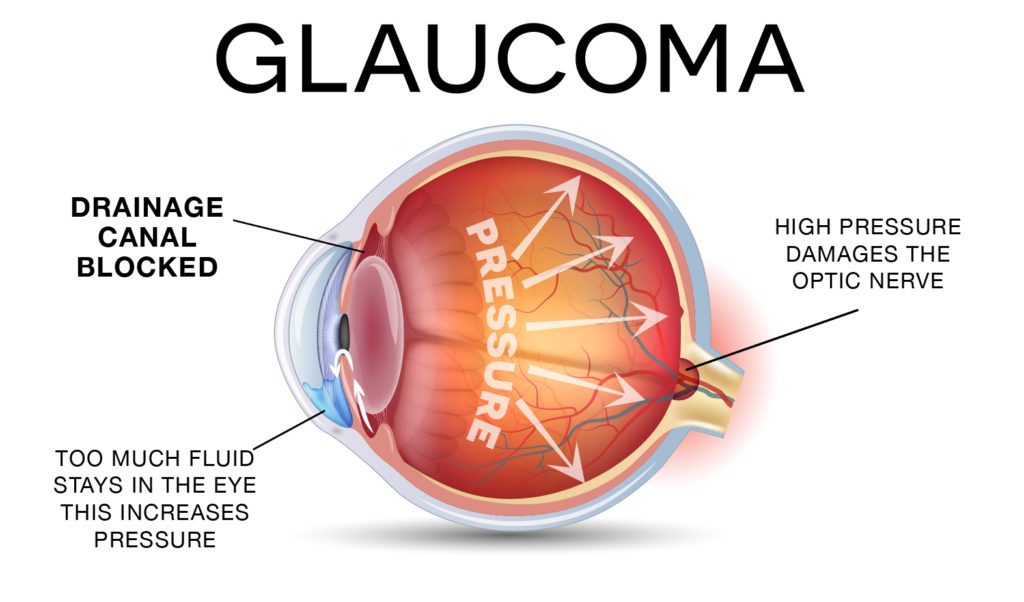Understanding Eye Pressure

The eyeball itself has pressure. Fluid (called the aqueous) is made inside the eye and it filters throughout the eye to provide nourishment. It must pass through the angle of the eye to do so, which is equivalent to a “drain.” In eyes with glaucoma, the drain is compromised, leading to a blockage of fluid and a buildup of pressure.
The main goal of treating glaucoma is lowering eye pressure. Studies show that lowering eye pressure in patients with glaucoma slows the disease process.
Glaucoma is not curable, but can be managed. Vision that is lost from glaucoma cannot be regained. As your glaucoma provider, our goal is to lower the pressure to keep your glaucoma stable, to prevent progression and further vision loss.
Eye pressure can only be measured in office and cannot be monitored at home. Eye pressure is dynamic, in that it can fluctuate. Thus, patients with glaucoma should have their eye pressure measured 2-4 times per year, depending on the severity of the glaucoma.
Glaucoma drops have two main mechanisms of action. They either work to decrease the amount of fluid that is made in the eye (similar to turning down a faucet), or to increase the amount of fluid that drains from the eye.
There is no known relationship between eye pressure, stress, tension, caffeine intake, fatigue, diet, or exercise. Eye pressure is a totally independent factor. Eye pressure is NOT the same as blood pressure and blood pressure does NOT affect eye pressure or vice versa.
Lastly, there is NO such thing as a “normal” eye pressure. Each person and each eye has a unique threshold above which damage to the optic nerve develops. Therefore we have to develop an individualized treatment plan for each patient. Your ideal pressure may be higher or lower than your neighbors’. You can develop glaucoma without ever having “high” pressure, and you can have “high” pressure without developing glaucoma. For this reason, a dilated eye exam and special testing is required to properly diagnose glaucoma.